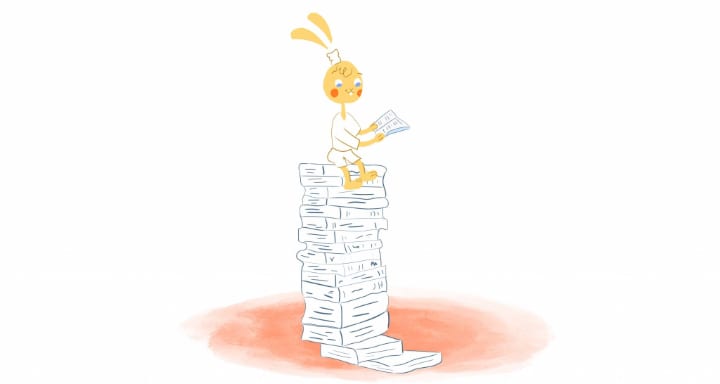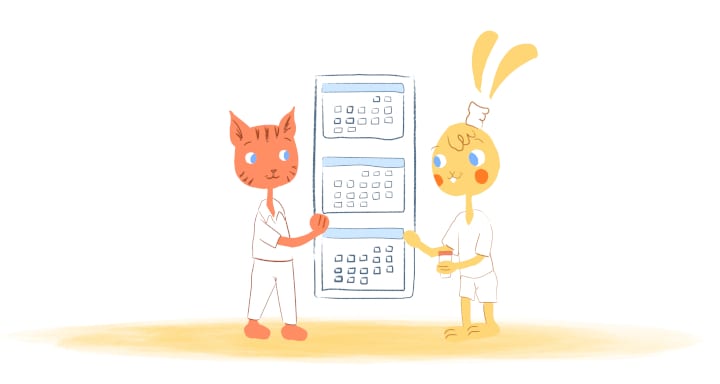
I’m going to ask you a question — please be honest with yourself. Do you struggle to get stuff done?
If you said “no” then I have a tough time believing that. I think we all have this problem occasionally. That’s why we turn to all sorts of productivity hacks to actually get more done throughout the day.
One of the most common, and longstanding, productivity hack is creating to-do-lists and checking off items after they’ve been completed.
There’s actually some psychology behind this. To-do-lists reduce anxiety, provide structure, and shows us what we’ve accomplished.
But, in order for you to actually get the most out of to-do-lists, you first need to know what to include in your lists, as well as apply the following X hacks.
What Should Be On Your To-Do-List (And What to Remove)
If there’s one grip with to-do-lists is that they can either by too simplistic and vague or extremely lengthy and detailed. In either case, your to-do-lists are probably causing you more stress and anxiety then it’s worth.
For example, if your to-do-list looked like this, you may be headed towards trouble.
- Call Stan
- Write and edit blog posts
Your list is way too vague. Are you going to clean out your inbox just once? Why are you calling Stan? Which articles are you going to write and edit? How many articles are you going to write?
Your to-do-list need a little more information to answer those questions. That’s why when you go to compose your list focus on your top three priorities for the day. Be specific and realistic, but also keep it simple.
You also should include the following to make your to-do lists more effective:
Boxes next to your handwritten lists.
This allows you to check off completed items. As a result, you get a rush of dopamine — which motivates you to do this again. “When dopamine flows into the brain’s reward pathway (the part responsible for pleasure, learning, and motivation), we not only feel greater concentration but are inspired to re-experience the activity that caused the chemical release in the first place,” explains Monica Mehta, an investor at Seventh Capital.
Brain Breaks.
To-do-lists usually only include tasks and not “me” time. Add like 15-minute breaks to your list, such as a walk or calling your best friend. When you do you can increase your productivity by up to 34 percent.
Details.
Add pertinent details to your to-do list. For instance, if you have a call at 10am you would want to include the following information; name, phone or conference number, meeting details, reference links, and purpose of the call.
Delegated Tasks.
“Just because you delegated a task to someone else does not mean that you can forget about it. Keep the delegated task on your list until you have confirmation that it is completed,” writes Craig Jarrow, owner of Time Management Ninja.
Task Duration.
Setting limits on your to-do-list items ensures that you don’t let time get away from you. So, if you have a phone call, set a 15-minute limit. That blog post you have to write? Plan for 2-hours.
Here’s what you should remove from your to-do-lists ASAP:
- Items that you’ll do regardless if they’re on your list or not, such email or brushing your teeth.
- A task that you never complete.
- A task that takes under 5-minutes to complete.
- A long-term project. Instead, break this down into smaller, manageable steps.
9 To-Do-List Hacks You Should Start Applying Today
Knowing what should and shouldn’t be on your to-do-lists is just the start. You should also apply the following 9 hacks to ensure that you actually get stuff done.
1. Use paper to-do-lists.
Don’t get me wrong. There are some really cool to-do-list apps like Wunderlist, Todoist, and Remember The Milk. While I’m not a fan of wasting paper, the fact is that writing information helps us remember information better. Additionally, writing lists helps our brains determine which information we should hold onto.
But, that’s not all.
Paper is tangible. You can touch and see it. It also limits your lists since you can only fit so much on a single sheet.
There’s also a deep satisfaction when crossing items off. And, you can even save these sheets of paper to track your progress.
If you want to reduce the amount of paper you use, invest in a whiteboard or blackboard paint and write your lists on the board or wall.
2. Get in “laser-focus” mode.
For your most important tasks, you should set aside 15-20 minutes of intense focus. Eliminate distractions by turning off your phone, closing the door, and unplug from the intent. Then set a timer and focus only on the task at hand.
It may sound ridiculous, but you’ll be surprised at how much more you’ll get done when shut-off the outside world and focus on thing at a time. You may even get addicted to those periods of intense focus.
3. Delete, delegate, defer, or do.
This is a popular time management technique where you:
- Delete tasks that aren’t important right now. You should also delete items that habits and those that take under 5-minutes to complete.
- Delegate tasks that aren’t important or your responsibility.
- Defer important, but not urgent, task until another time.
- Just do the task and move on to the next item.
4. The Ivy Lee Method.
This is a productivity technique developed by productivity consultant Ivy Lee back in 1918. It goes as follows:
- At the end of the day jot down the six most important tasks for tomorrow.
- Prioritize these items in order of their importance.
- Concentrate only on the first task before moving on to the next.
- Move any unfinished tasks to tomorrow’s list.
- Repeat the process daily.
The reason this works is that it’s simple, forces you to make tough decisions, encourages to start working, and requires single-task.
5. Group like tasks through batching.
“Batching is a form of productivity where you arrange tasks in set groups,” writes Amanda Abella in a previous Calendar article. “In other words, you block off time on the calendar for similar tasks.”
You can apply this concept to your to-do-lists as well.
For example, your to-do-list could be to write three blog articles and edit another three. The next day it could be returning calls and meeting with your team.
The reason why batching is so powerful is because it prevents you from multitasking, provides structure, forces you to stick to a schedule, and reduces stress. Most importantly, it helps you get more done. That’s because you’re using the same part of your brain to complete the task instead of shifting back-and-forth.
6. Follow the 80/20 rule.
“The Pareto Principle is also known as the 80/20-Rule. It suggests that 80 percent of the results come from 20 percent of the efforts,” explains Calendar’s Renzo Costarella.
“It’s your job to identify which 20 percent of your efforts are producing your best results. Do your best to hone in on these specific efforts and scale them the best you can.”
7. Create a “done” list.
Don’t throw away your completed lists. Instead, get a binder and place these “done” lists in there. It’s a great way to track your progress, see if they are any recurring tasks, and it builds morale. After all, seeing what you’ve already accomplished can motivate you to keep on trucking.
8. Impose realistically, but aggressive deadlines.
Let’s see you give yourself an hour to crank out a quick blog post. Cut that down to 45-minutes. It’s a simple and effective way to keep you focused. What’s more, you can use that extra 15-minutes to unplug or do something productive like meditate, read, or go for a walk.
Personally, this also gamifies work. It’s a challenge for me to see if I can complete the task in under the time allotted.
9. Make to-do-lists fun.
Finally, experiment with different types of list-keeping until you find the format that is the most fun for you. This could be through bullet journaling, the old school Day Planner, this technique with a legal and a pen, or daily task cards.











Abby Miller
Student at UC Berkeley, currently working on a degree in Electrical Engineering/Computer Sciences and Business Administration. Experienced in CSX, productivity management, and chatbot implementation.